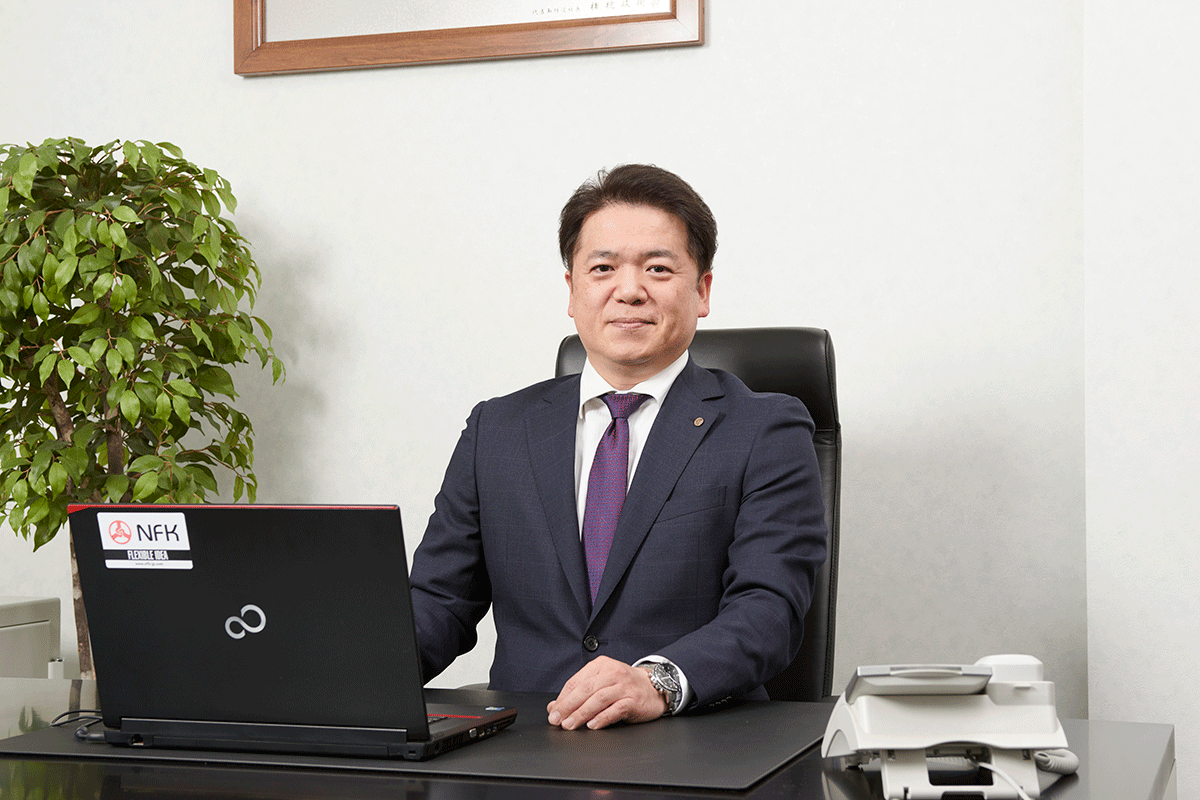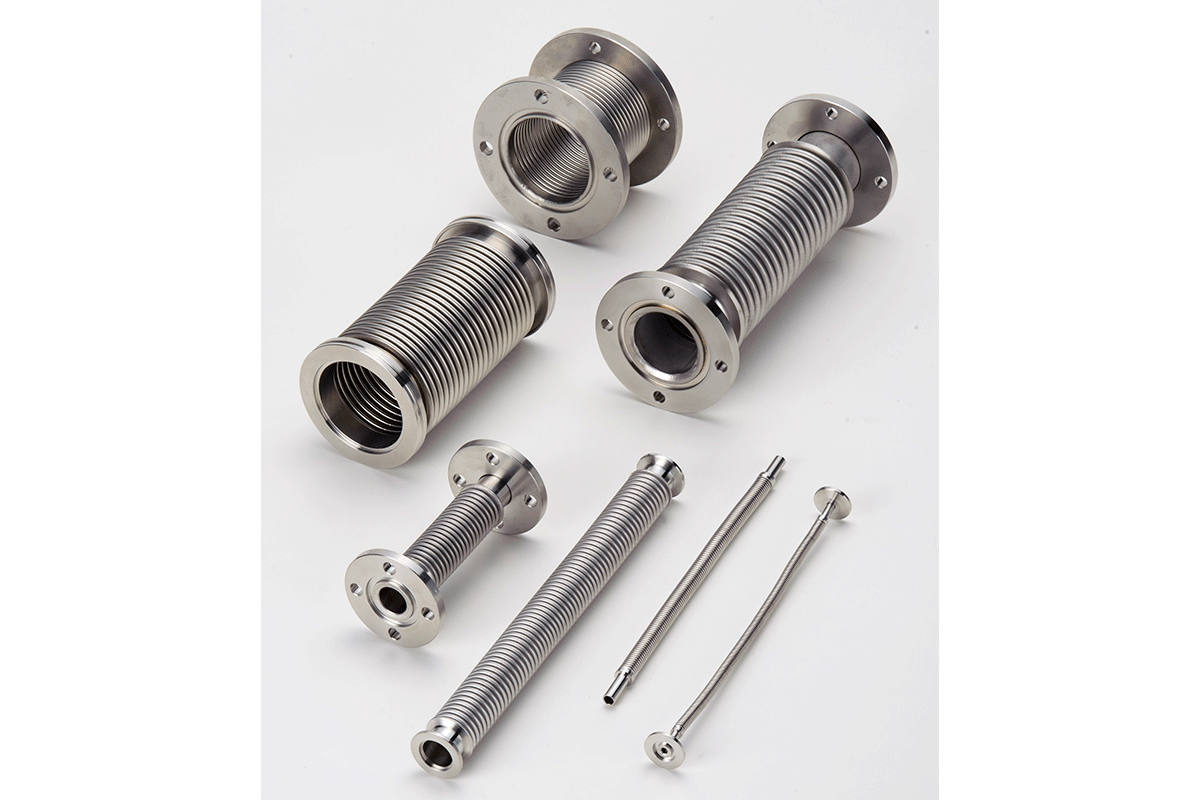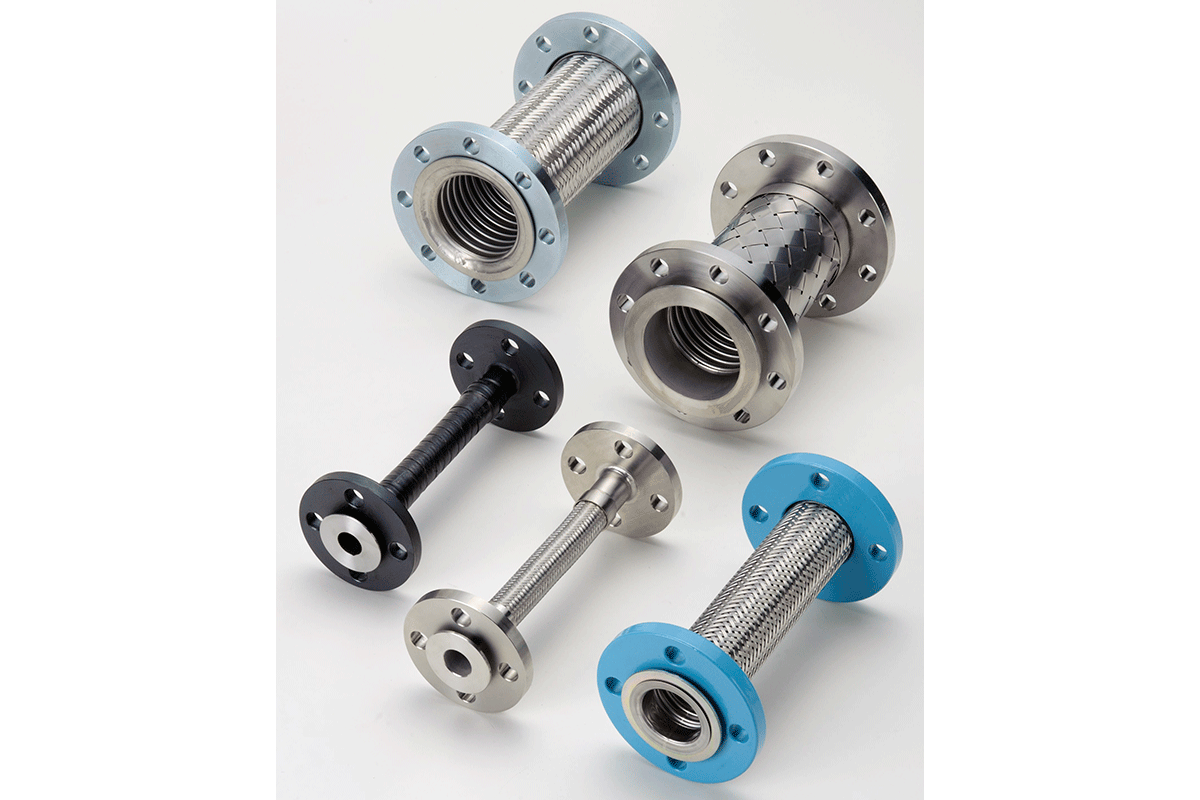Masaki Yokomakura, President of Nangoku Flexible Hose Industry Co., Ltd., shares insights on Japan's competitive advantages amid current global dynamics. Yokomakura highlights the need for differentiation beyond competitive pricing, emphasizing the importance of innovation and market targeting. The interview delves into the company's strategies amidst Japan's aging population, focusing on global expansion, product strengths, and innovations in handling liquid hydrogen.

Japan is at a very interesting time right now. Due to the supply chain disruption caused by COVID-19 and the tension between China and the US, coupled with the fact that the yen is at a historical low, we think Japan is once again very attractive on the international scene. Do you agree with this premise, and what do you think are the key advantages of Japanese corporations within this macro environment?
I agree with that sentiment but under a certain condition. The depreciation of the Japanese yen might be temporary. While Japanese products presently boast competitive pricing, sustaining this advantage may prove challenging in the long run. With numerous similar products in the market, differentiation becomes a requisite. We need to provide products and services that have special features. Our strategy should extend beyond price competitiveness to ensure lasting appeal and customer satisfaction. We must introduce value-added products and services, accompanied by a concerted effort to identify and cater to the right market.
We have a base in Vietnam. Although the Vietnamese local market acknowledges the superior quality of made-in-Japan products, there are some there are Vietnamese customers who do not require high standards. Hence, it becomes crucial to pinpoint customers and markets that specifically demand Japanese products renowned for their quality and sophisticated design, especially for our business.
One of the standout advantages of Japanese suppliers lies in the unwavering political stability of Japan as a nation. This, coupled with the diligence of our workforce and the high-quality infrastructure in place, establishes a robust foundation for ensuring a stable and continuous supply—a key strength for Japan in the global marketplace.
Japan has a very aging population, and it is said that by 2050, the population will drop below 100 million people, raising two main issues. The first one is the shortage in the labor force, and the second is the slowly shrinking domestic market. As a company specializing in flexible hose and expansion joints, to what extent must you look overseas to ensure long-term business success?
Since we are in the infrastructure industry, the demand for refurbishment will continue despite the population decline. Our strategic goal is to further enhance our presence in the domestic market, and through our Vietnamese factory, we can secure a sufficient human labor force. However, we also want to go beyond the confines of the Japanese market by expanding our footprint globally and proliferating the recognition of our brand.
What would you say is your firm's main competitive advantage that sets you apart from your competitors?
Our primary strength lies in delivering high-quality products and a thorough responsiveness to our customers' needs, down to the minutest details. A notable example of our commitment to innovation is our offering of one of the smallest radius flexible hoses in the industry.
This particular flexible hose boasts the world's smallest diameter and is specifically designed for vacuum applications. The collar is intricately welded to a 3mm tube. However, it's important to acknowledge that this product doesn't conform to the standard type commonly used in vacuums, and as a result, it hasn't been selling well. It was developed primarily to showcase our technological prowess rather than being aligned with the mainstream vacuum market.

Flexible Hoses for Vacuum
Your products cater to different kinds of industries such as energy, chemicals, electronics, real estate, and many others. Among these industries, which one do you reckon offers the greatest growth opportunity for your business? Are there any new fields you'd like your products to cater to?
While we currently hold a significant share in the industries you’ve mentioned, our future focus and growth prospects lie in the evolving energy sector, particularly with the emergence of the new hydrogen energy plan. Our goal is to proactively engage in marketing efforts to position ourselves as integral contributors to this groundbreaking project.
One of your standard products is your flexible hose, with many types, such as the threaded type with flanged fluorine resin joints and the fire service type. While these hoses are crucial in ensuring safety, it's important to acknowledge certain limitations like their inability to resist unexpected pressure, inner corrosion, scale, contamination, or bacterial growth. How does your flexible hose overcome these challenges, and how is it superior to more conventional, similar products?
The ridges incorporated into the hose design empower it to withstand external pressure, ensuring durability even in a full vacuum state. To address inner pressure, rigorous testing is conducted to guarantee resilience up to four times the expected usage.
When clients provide samples and specify their tube requirements, we carefully assess the intended application. This evaluation guides us in selecting the most suitable stainless-steel material—whether it be 304 or 316L—to mitigate the risk of corrosion.
To counter issues related to scales, we employ a clean room environment to eliminate contamination. In addition, stainless steel itself is resistant to bacteria, reinforcing the reliability of our products.
Do you offer maintenance services to companies that have been using your hoses for a long time?
No, we don't offer maintenance services.
You're also an expert in manufacturing bellows type expansion pipe joints from standard ones such as the expansion joints NK-6500, NK-6600, and NK-6700 to your NK-8700 lead pipe pressure balanced expansion joint. These help contain expansion and contraction within your clients' different piping systems and greatly prevent earthquake damage. In 2023, many locations experienced devastating outcomes, like Turkey and Morocco. How are your bellows expansion joints ideal for resisting these kinds of conditions and environments? Do you take into account the rise of natural disasters worldwide and in various regions when you think about international expansion?
Given Japan's susceptibility to earthquakes, our flexible hoses adhere to strict anti-seismic standards. In our product development, we prioritize compliance with regulations to address the seismic challenges unique to the region. The importance of this became evident during the Hanshin-Awaji Great Earthquake, when rubber flexible hoses succumbed to ground settlement, resulting in significant water leakages.
In contrast, our manufactured flexible hoses and bellows are made from metal, offering a superior solution. During ground settlement, the ridges of our hoses expand and seamlessly return to a straight pipe form. This design ensures that there is no risk of liquid or gas leakage, even in the event of an earthquake. Our flexible metal hoses have consistently demonstrated their effectiveness in earthquake scenarios, but we aren't yet ready to promote our products overseas as a part of the earthquake resistance measures.
To illustrate the concept, envision a bendable straw—the flexible part is similar to our pipe bellows. In the event of an earthquake, the bellows expand and straighten out, exemplifying the resilience and adaptability of our products in seismic conditions.

Flexible Hoses Both end Flange type
Japan is known to be one of the most innovative countries and has pushed its R&D to meet extreme requirements. Japan invests about 3% of the country’s GDP into new technologies. What is the main focus of your R&D strategy? Do you have any new products or developments you can share with us today?
Our ongoing development focuses on creating flexible hoses suitable for handling liquid hydrogen, a task presenting unique challenges due to the distinctive characteristics of hydrogen atoms. Being the smallest existing atom, hydrogen can penetrate through materials.
To counteract this, we are experimenting with a denser type of stainless steel as a material choice. The goal is to employ this denser stainless steel to effectively trap hydrogen atoms within the hose. Compared to traditional materials like rubber or resin, dense stainless steel demonstrates a promising capability to securely retain hydrogen.
In our development efforts, we are refining the material and exploring innovative pipe shapes to achieve optimal results.
When do you expect to launch the first product?
We are engaged in a joint development initiative with a major Japanese company, one of the top-heavy industry makers in Japan. Our target is 2025.
Partnerships are key to accessing international markets and unlocking the different aspects you don't know about to introduce your products. It’s also very useful in co-developing innovative products and solutions. What role does partnership play within your business model? Are you looking for these kinds of partnerships or any other partnerships within overseas markets?
Establishing partnerships plays a vital role in our business development strategy. We are actively seeking domestic and international partners with expertise in technologies related to flexible hoses, particularly those capable of producing more efficient bellows capable of withstanding warping or changes in shape. Furthermore, we are interested in collaborating with companies capable of providing fluorocarbon pipes
Where would you like to continue your international expansion? What strategies would you employ to go to new locations? Would it be through M&A, a new subsidiary, or a joint venture?
Our strategic emphasis is on directing resources toward our operations in Vietnam. Our plan involves leveraging our presence in Vietnam as a springboard for expansion into other ASEAN countries. The primary consideration is to establish a direct subsidiary in these markets. However, we remain open to the possibility of M&A should we encounter a well-aligned and promising company. ASEAN countries are also on our top list.
Imagine we come back in three years for your 55th anniversary and have this interview with you all over again. What would you like to tell us? What are your dreams for this company, and what goals would you like to accomplish over the next 3 years?
As we celebrate our 52nd anniversary, reflecting on our journey reveals a transformation from a subcontractor for major firms to a strategic shift in our business approach, emphasizing the promotion of our NFK brand. This strategic pivot has yielded significant results, elevating our turnover from approximately JPY 1.2 billion to JPY 3.1 billion. The NFK brand has become widely recognized within the Japanese industry.
We aspire to replicate our remarkable growth in the Asian and global markets. Our focus, anchored around our factory in Vietnam, is on a continued expansion overseas. In three years, I can imagine our company not only thriving in Vietnam and other ASEAN countries but also actively promoting the NFK brand on a global scale.
0 COMMENTS